|
||||||||||||||||||||||||||
|
1. Remove the dash from the car per the service manual. An open well ventilated area is ideal (outside if it's warm enough). While the dash is out of the car is the time to thoroughly clean it and/or remove any old paint. Brake fluid was an excellent paint remover; this formerly black painted dash from a tan interior Miata was stripped down to the primer. Clean off all excess fluid to ensure good glue adhesion when you install your dash cover. |
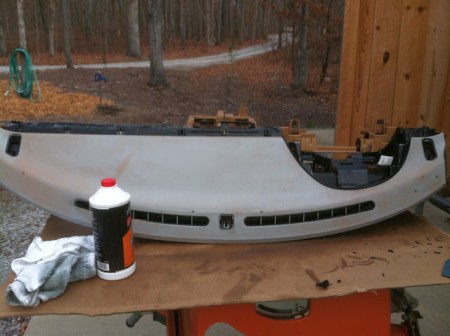 |
|
2. This dash had Tenax fasteners installed to fasten the factory tonneau cover. You will want to document the fastener locations before covering as they will be difficult to find after the leather is installed. |
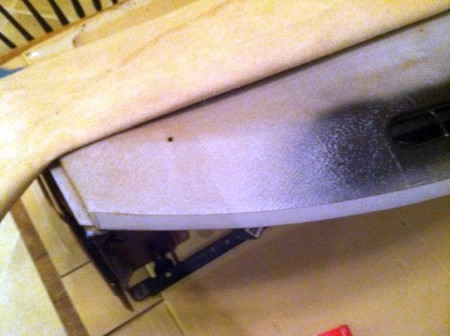 |
|
3. This dash was stripped down the primer. Prior to installing the leather cover you will want to paint any areas that will not be covered. On this car the inside edges and braces for the windshield defroster vents were painted with black satin spray paint to give a more finished appearance. |
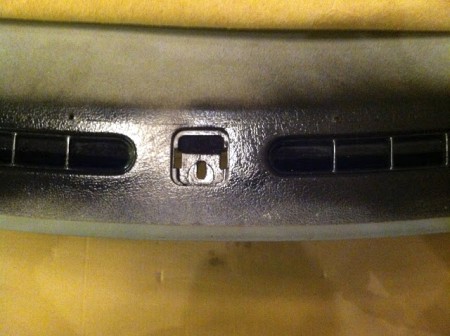 |
|
4. To install the leather under the VIN plate on the driver's side it is necessary to remove it. This can be done by drilling out the rivets. DO NOT LOSE OR DAMAGE THE VIN PLATE! IT CANNOT BE REPLACED! Document the location of these holes as well. |
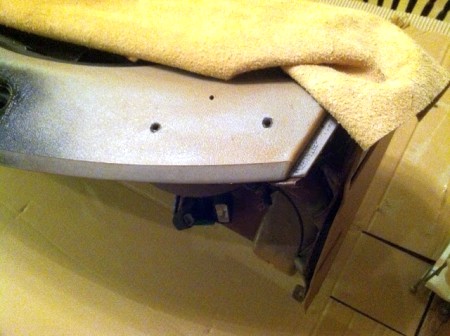 |
|
5. For the installation of the leather, you'll need to work in a location with good lighting that is warm in order for proper glue adhesion. You may need some cardboard shims to keep the dash stable while you are working on it. Test fit the leather by draping it over the dash. You will want to leave plenty of excess on all sides. |
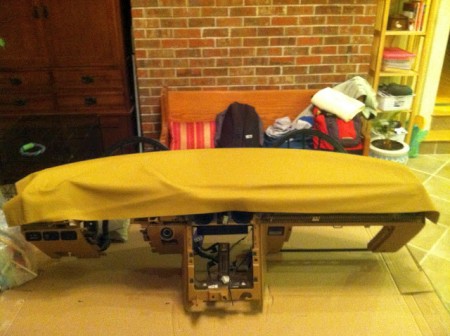 |
|
6. Start in the center of the dash (front to back and side to side) and work outwards. Press the leather firmly to the surface and pull evenly while you are applying it; this will avoid any bunching up of the leather. Don't worry about gluing down the inside of any openings at this point; it will be easier to do once access cuts are made. Once the top surface is done, tilt the dash so the windshield edge is up. Apply adhesive to the underside of the dash edge, about 1/2 inch wide, and wrap the leather under the edge. Contact cement works great for this as it makes a very quick bond. Once this is done tilt the dash so the cockpit side is up and do the same for the edge in front of the passenger side and the far left driver's side. |
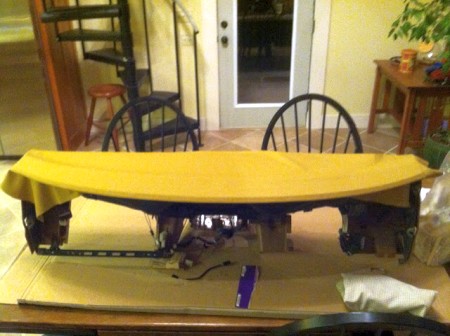 |
|
7. Trimming the openings. An XACTO knife was an invaluable tool for trimming, along with a sharp pair of scissors. You will be able to feel all of the openings through the leather. Start with the center square opening (it's easiest) and make a small 'X' cut right in the center with the legs of the 'X' pointing to each corner of the opening. Gradually enlarge the size of the 'X' until you can push the leather down flush with the surface beneath. Pull the flaps up and apply contact cement underneath and push into place. Trim around the gauge hood opening leaving about 1 inch of excess, lift up, apply contact cement, and press into place. Make a long cut down the center of each windshield defroster vent; you can feel the sides of the vent opening through the leather. Stay about 1 inch away from the ends of the openings at this point. |
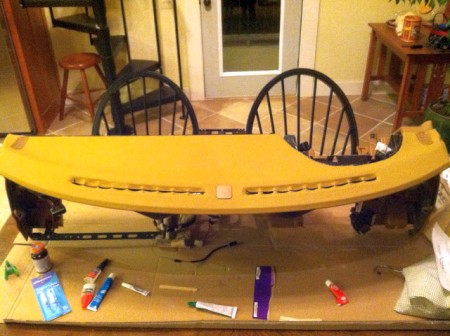 |
|
8. Here you can see the side defroster vent opening. Repeat the same 'X' type cut here as in the center dash. Remove as much material as possible so the plastic vents will seat, but be careful to not cut too much or it will show. The XACTO knife was particularly handy here. The edge circled in red will be exposed when you reinstall the dash. Use a straight edge with the XACTO knife to make this cut as neat as possible. Using your earlier photo as a guide, push down until you can feel the hole for the Tenax fastener. Use a large needle or ice pick to make a hole in the center and then reinstall the fastener. |
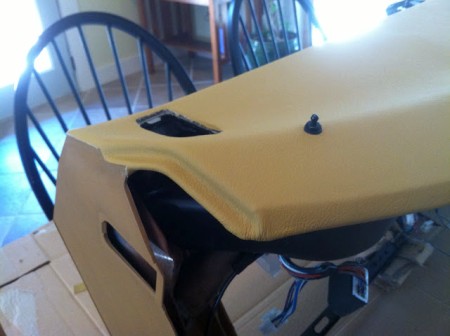 |
|
9. The windshield vent openings are challenging. You will need to make multiple cuts on the ends to get a good smooth fit (see illustration below picture). There is a groove where the little cross braces connect, lift and apply adhesive underneath to the edge of that groove and then press the leather into place. Once dry you can place a short straight edge on top of two adjoining braces and trim to that line with the XACTO knife. The corners will be the most difficult as you will have to make those cuts free hand. Remember: less is more, take your time! A black marker can help blend in any loose fibers that protrude from the cuts. |
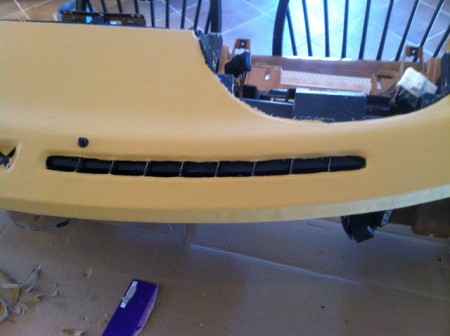 |
|
ALTERNATIVELY: Remove the slats altogether and install a metal screen to keep things from falling into the ducts. This method makes installation much easier. Slice the leather down the middle of the long defroster opening and work the leather against the rim. You can use the screen to help hold down the leather after it's glued into place (The screen is held down with plastic weld.) |
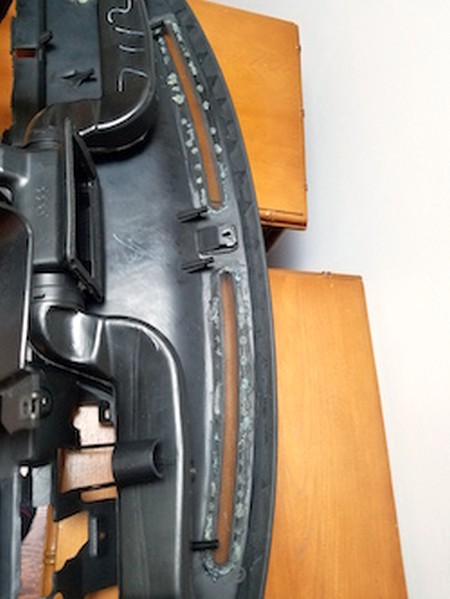 |
|
THIS PICTURE SHOWS WHAT THE ALTERNATIVE LOOKS LIKE ONCE COMPLETED. |
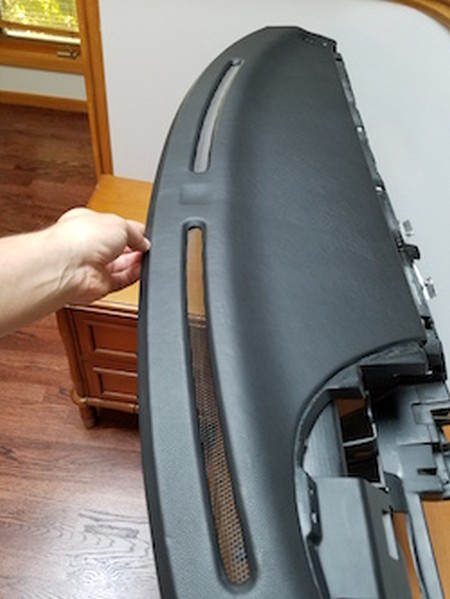 |
|
10. Use scissors or the knife to trim off the excess from the front and rear edges of the dash. Install remaining fasteners and VIN plate using the method described in Step 8. You will need some pop rivets to reinstall the VIN plate. MAKE SURE THE VIN PLATE IS INSTALLED SO THE NUMBER CAN BE READ THROUGH THE WINDSHIELD! Your dash is now ready to go back in the car. Reinstall reversing the removal steps and enjoy! |
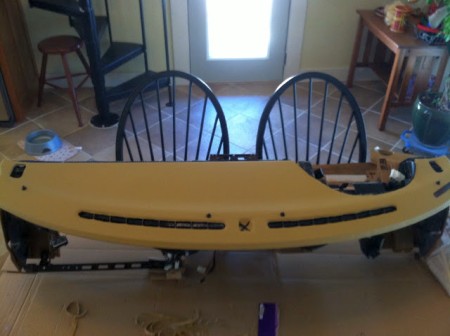 |
Useful tip
|
|
Please subscribe to our newsletter.
Get an instant 20% discount and enter our montly $100 CASH sweepstakes!